Forbidding mountains and stark landscapes, The Ladakh valley in the Western Himalayas, situated at an altitude of 12000 ft above the sea, is the ultimate destination for adventure seekers in India. The barren cliffs and plateaus, high altitude mountain passes, and the mighty Indus and Zanskar rivers make this a trekking, mountaineering and rafting paradise. The sheer altitude makes this journey, not for the faint-hearted. Ladakh valley is home to numerous Buddhist monasteries, which lend a certain mystical charm to the region.
Geographical and Historical Perspective
The Union territory of Ladakh was until recently part of the State of Jammu & Kashmir. The two major cities in this area are Kargil and Leh. Leh has an airport, which is connected to few cities in India. However, travel via road is the most thrilling aspect of the journey. There are two major road routes into this region: via Srinagar and Manali. The journey into this region takes you through breathtaking landscapes. Some of the highest mountain passes in the world are located here.
Roads into Ladakh are only open from mid-May to October when the snow is cleared from the highways. It is highly recommended to schedule your visit around the monastic festivals of Ladakh, which is celebrated with great fanfare in the Buddhist monasteries in this region. An Inner Line Permit is required for visiting various places like Nubra valley, Pangong Lake, Hanle, while some places are strictly off-limits due to the proximity of this region to the Pakistan and China borders.
The Leh-Manali highway takes you through the majestic valleys of Lahaul and Spiti in Himachal Pradesh and Zanskar valley in Ladakh. The journey starts from Manali (at 6400 ft) and passes through Rohtang La (13000 ft), Baralacha La (16500 ft) and Taglang La (17500 ft), with the Indus river keeping you company. The journey from Manali to Leh takes 12-14 hours, depending on the road conditions. However, it is highly advisable to make an overnight stop at Keylong or Jispa, to get acclimatised to the high altitudes.
Day 1 – Srinagar to Kargil
We travelled to Leh from Srinagar (at 5200 ft) via the National Highway 1 in late May. The journey started early in the morning to allow us to cross the one-way traffic at Zoji-La. We reached the lush green valleys of Sonamarg about 3 hours from Srinagar and had a quick stop for breakfast. After gorging on aloo parathas and puris, we started gaining altitude to reach Zoji La (11500 ft). Zoji La (La means mountain pass in Tibetan and Ladakhi languages) is the main gateway to Ladakh, connecting the Kashmir valley to Drass and Suru valley.
The traffic is notorious and it took us more than an hour to cross this pass. Traffic jam at 11000 ft feels differently when you are on a one-way road, clinging to the edge of a mountain cliff. We drove between a giant wall of ice, which was cleared to reopen the road. After crossing Zoji La, we began the descent into the district of Kargil. The NH1 runs very close to the highly contentious Indo-Pakistan border, hence there are several army cantonments in this area. We crossed the town of Drass and stopped at the Kargil War Memorial.

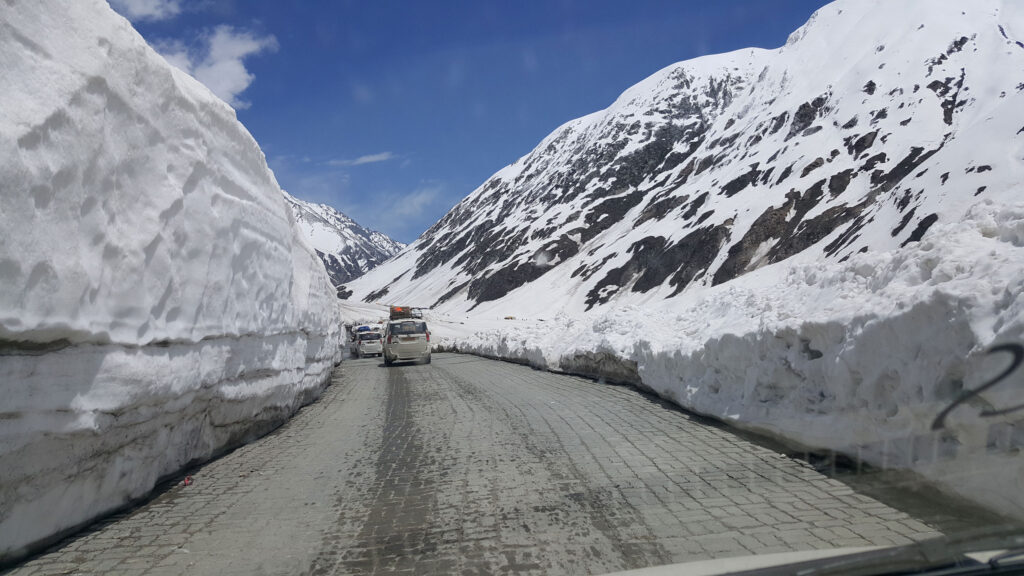
Kargil War Memorial:
The 1999 war between India and Pakistan was infamously fought in this region. As we approached the War Memorial, we passed several mountains which served as key battlegrounds during the war: Tiger Hill, Batra Top and Tololing Hill. The War Memorial is situated outside Dras and is dedicated to the brave soldiers who died defending their motherland. It gives a panoramic view of the battlefields, making us realise how close to home this war was. There is a pink sandstone structure with the Indian tricolour flag and the flags bearing the names of the soldiers who died during all wars fought post-Independence. The Manoj Pandey Gallery, named after the Param Vir Chakra awardee Late Captain Manoj Pandey, chronicles the Kargil War with a display of various weapons used or seized during the war.
We stopped overnight at the town of Kargil (8800 ft) to get acclimatised to the higher altitudes. Kargil is nestled in the Zanskar range of the Greater Himalayas and is considered the gateway to Ladakh. The river Suru follows on your journey into the town. It took us 12 hours to reach Kargil from Srinagar, with various stops along the way. Dinner was a Kashmiri fare with Rogan Josh, Dum Aloo, Yakhni and Naan.

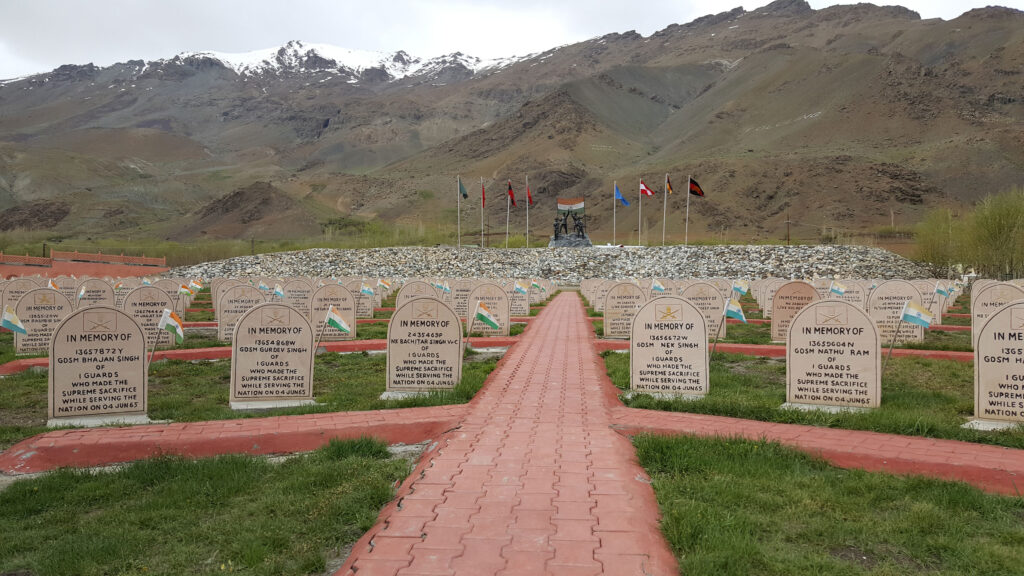
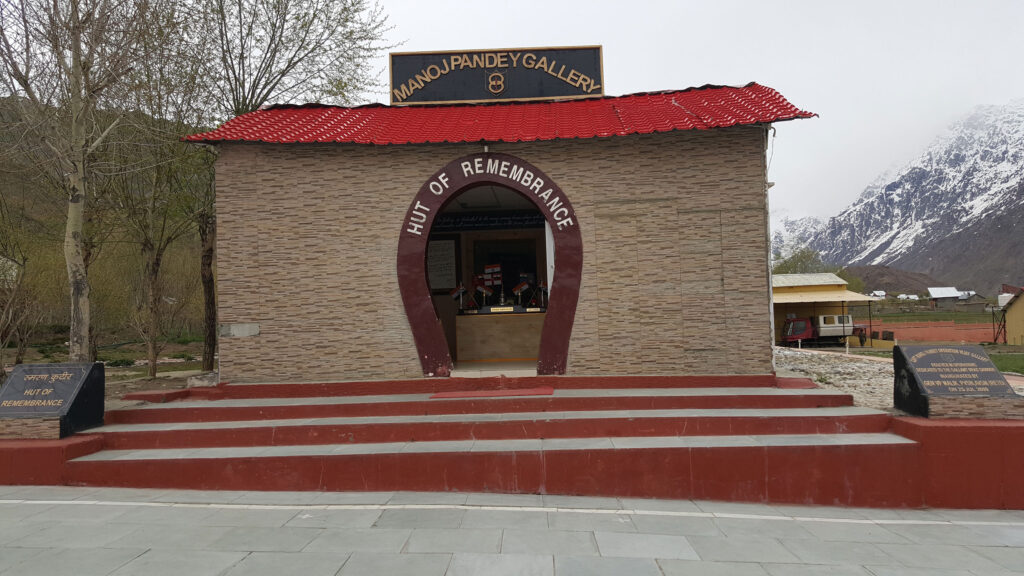
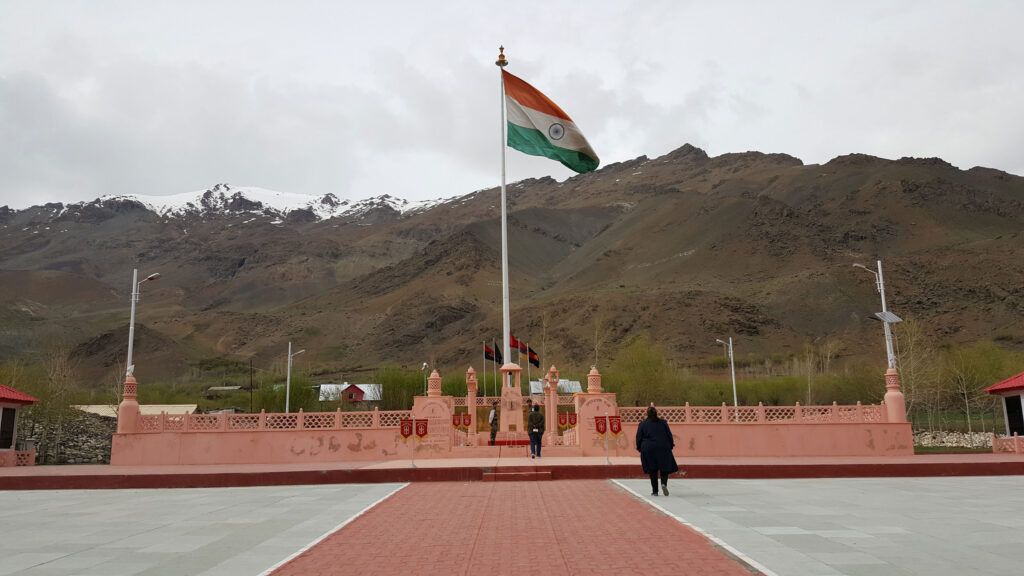
Day 2: Kargil to Leh
We started early the next day from Kargil onwards our journey to Leh. The landscape started changing from snowcapped, lush green forests of the Kashmir valley to stark, desert-like rugged mountains of the Ladakh valley. As we kept driving, the sparsely inhabited landscape was occasionally broken by a herd of yaks or sheep, grazing happily. These mountain passes are adorned with Buddhist prayer flags, wishing a safe passage for the travellers.
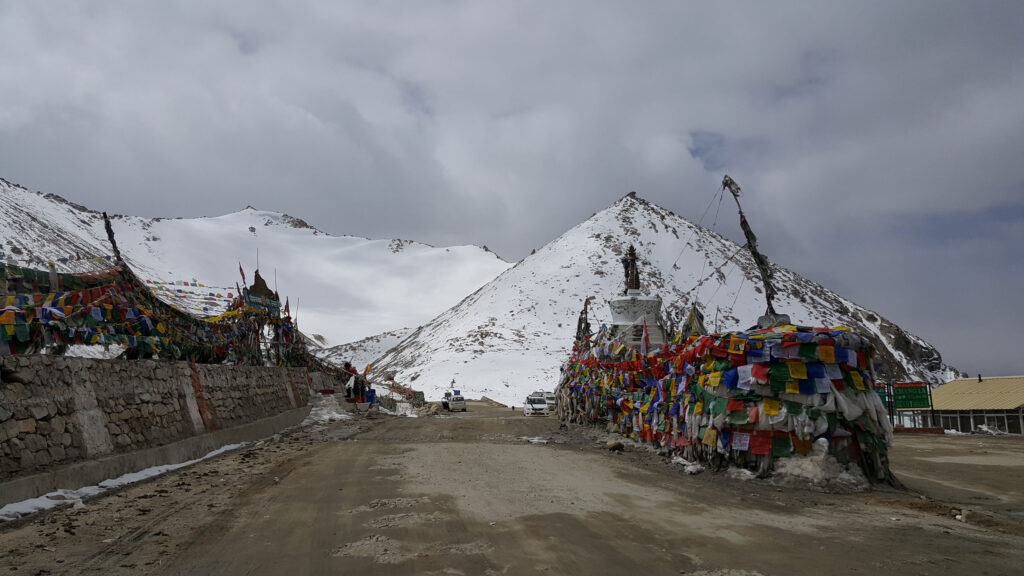
After making a brief stop at the Mulbekh monastery to admire the 9-metre tall statue of Maitreyee Buddha, we rapidly started gaining altitude till we reached the scenic passes of Namika La (12200 ft) and Fotu La (13500 ft). We travelled through the Tibetan Buddhist monasteries of Lamayuru, which is one of the largest and oldest monasteries in the region. En route, we passed the Magnetic Hill, which is famous for creating an optical illusion of rolling uphill due to far-away mountains.
We briefly visited the Gurudwara Pathar Sahib which was built in memory of Guru Nanak and his visit to Tibet. The confluence of Indus and Zanskar river, the two mighty rivers of the region, lies outside of Leh. Indus river is one of the longest rivers in Asia and has a special place in history as the cradle of the Indus Valley civilisation. Zanskar river is popular for rafting as well as the famous Chadar Trek. A 105 km hike on the frozen river in peak winter months is considered one of the most adventurous trekking expeditions in the world.
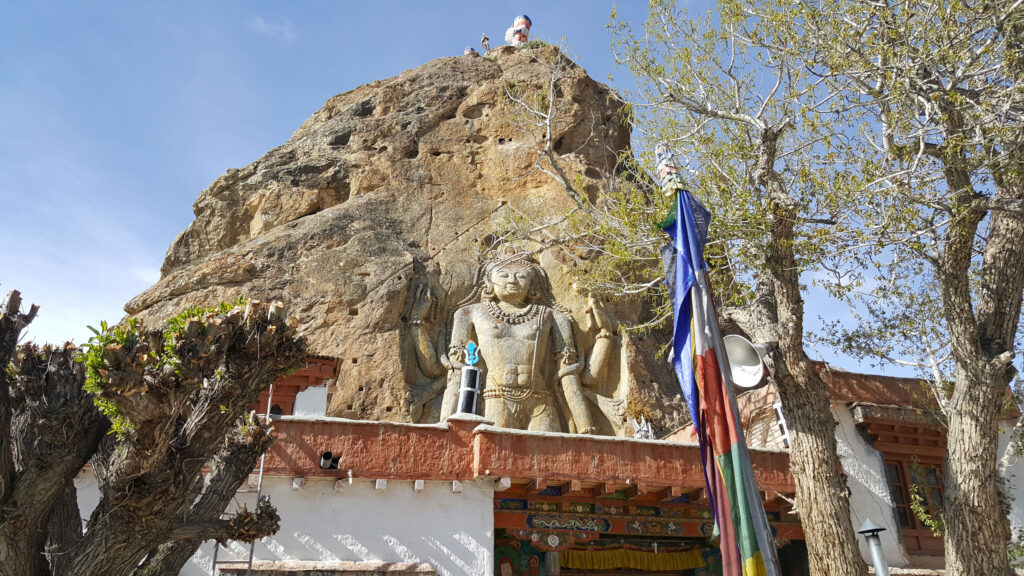


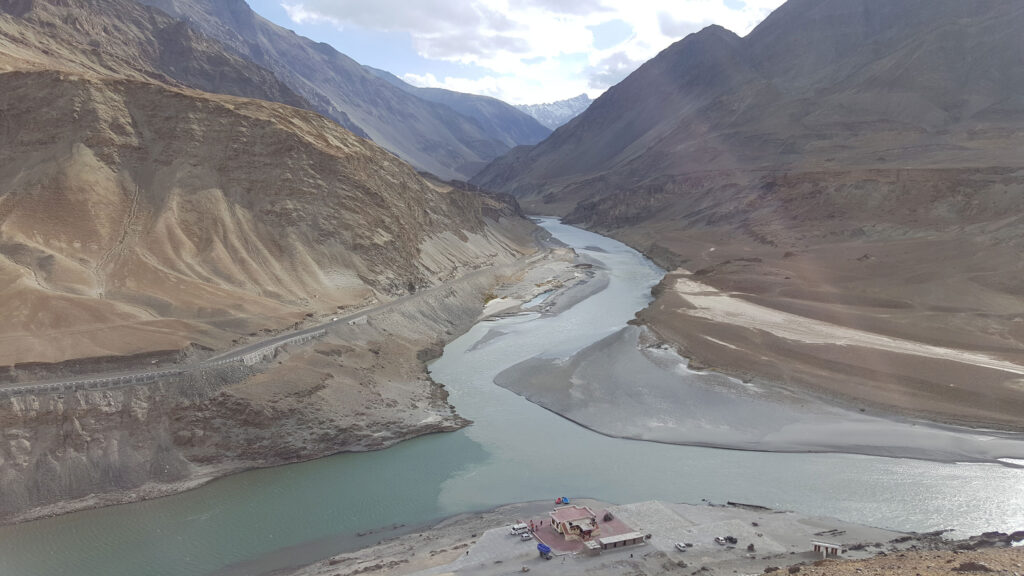
We finally reached the town of Leh (11500 ft) after a 10-hour journey from Kargil. Leh is a quaint town that was the capital of the Himalayan Kingdom of Ladakh. Ladakhi cuisine has a strong influence on Tibetan cuisine and consists of lip-smacking delicacies like momos, thukpa, thenthuk. Butter tea, made from yak milk, is an excellent companion for all the road stops we had on our journey.
Day 3 – Pangong Lake
At 13800 ft, Pangong Lake is one of the largest high altitude saltwater lakes in the world. One-third of the lake lies in India while the rest is in China. The India-China border runs very close to this region and certain sections of the lake are strictly off-limits. The breath-taking bluish-green colour of the lake is in stark contrast with the arid snow-covered mountains in the backdrop. Various migratory birds like seagulls, cranes, geese and Brahminy ducks visit this lake during summers, whereas in winter the lake freezes over. The climax scene of the Bollywood movie ‘3 Idiots’ was shot here and has made it a must-visit tourist spot in the region.
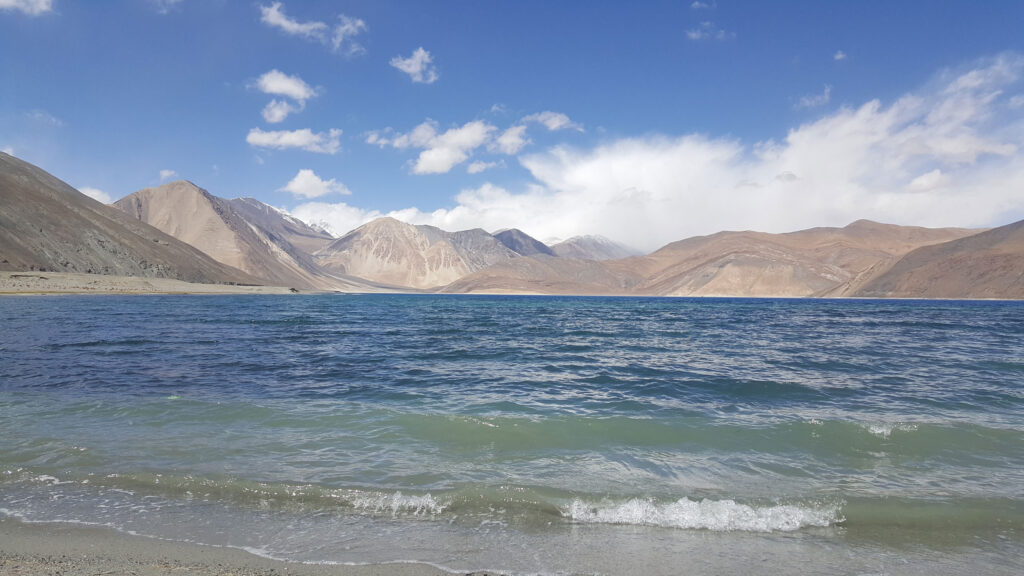
The lake is a 5-hour drive from Leh, through various high altitude mountain passes. The highest mountain pass on this route is Chang La at 17800 ft and here you will truly feel the effect of high altitudes – lightheadedness, numbness, headaches and ringing in the ears. At such high altitudes, it is not advisable to stay for more than 20 minutes.
The lake is an ecological reserve and swimming or boating is not permitted here. There are some small islands in this lake that are breeding grounds for birds and are not accessible to tourists. The colour of the water changes its shade from turquoise blue to coral green throughout the day. The water is so crystal clear that we could see the fishes swimming at the bottom of the lake. There are options of renting a tent and spending a night near the lake, although we returned to Leh in the evening.
Day 4 – Nubra valley
Nubra valley is a cold, high altitude desert at 10000 ft, nestled between the mighty Karakoram and Ladakh mountain ranges in Greater Himalayas. It is about 150 kilometres away from Leh and the drive takes you through one of the highest motorable pass in the world: Khardung La (18300 ft).
Khardung La serves as a strategic pass for Siachen Glacier, the largest glacier in the Karakoram range and the highest battlefield in the world at 20000 ft. We passed the town of Dikshit, famous for its monastery and a 32-meter tall statue of Maitreyee Buddha. The vast dunes and the Bactrian camels came into view as we entered the town of Hundar. It was the former capital of the Nubra kingdom and is located on the historic Silk Route – an ancient trade route connecting East Asia, Southeast Asia, Persia, Africa and Europe.
The furry two-humped Bactrian camels are a common sight here and camel riding is quite popular. Originally from Central Asia, they were used for ferrying goods across the Silk Road and are still used for travel across the high altitude desert. We spend the day enjoying the silver sand dunes of Hundar and the performance of the Ladakhi Shondol dance.
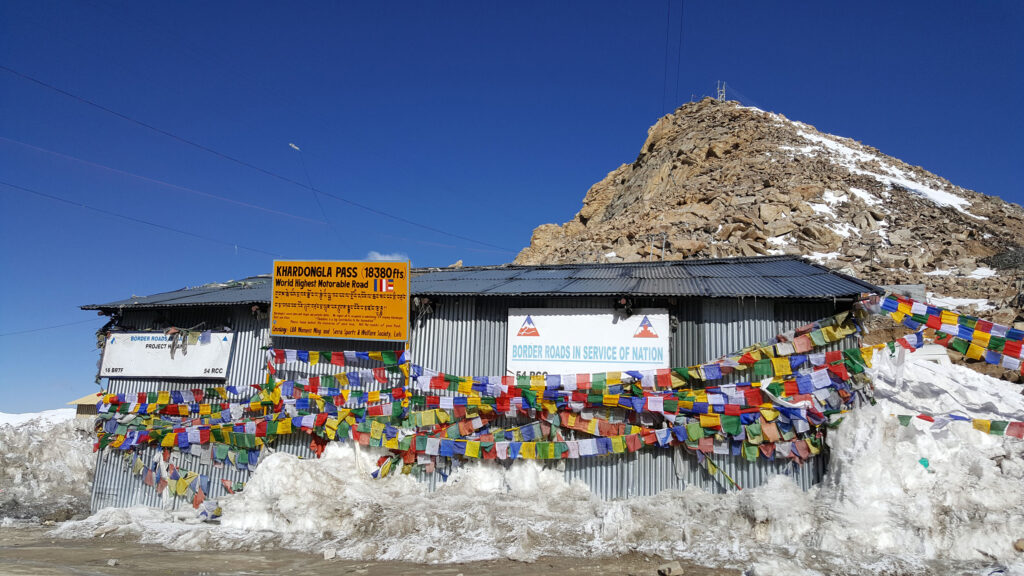
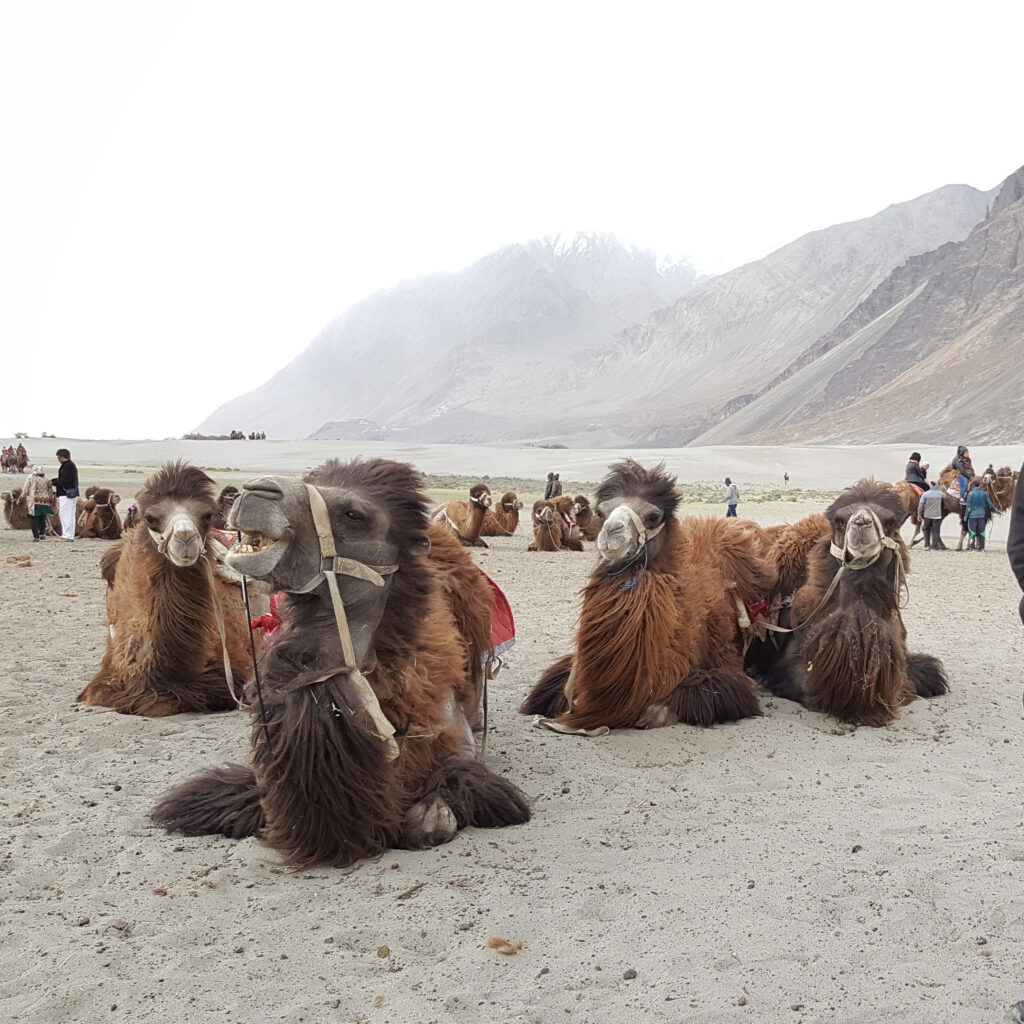
Nubra valley is also one of the best astronomical sites in India; many Indian optical telescopes are located in Hanle, a few hours ride away. We stayed the night at Hundar stargazing and watching the Milky Way, with an eerie silhouette of the mountains.
Day 5 – Leh
We travelled back to Leh the next day early morning from the Nubra valley. We visited the Leh Palace, which was the former seat of the Kingdom of Ladakh. The palace has panoramic views over the city of Leh from its terrace. The museum inside the palace displayed the various ornaments, paintings and artefacts belonging to the former royal family of the region.


Another major attraction in the city is the Buddhist white-domed Shanti Stupa. Situated on a hilltop, the Shanti Stupa was built by the Japanese and Ladakhi Buddhists to promote universal peace and 2500 years of Buddhism. It holds the relics of Buddha and has a large statue of golden Buddha on a platform. The Shanti Stupa also has panoramic views of the city and the distant snow-capped mountains and is best visited during sunrise or sunset. The biggest monastery in the region, Hemis Monastery, is located 40 km away from Leh and is popular for its annual 2-day festival. We spent the evening strolling the lanes of Leh bazaar, shopping for souvenirs and specialities of the region.
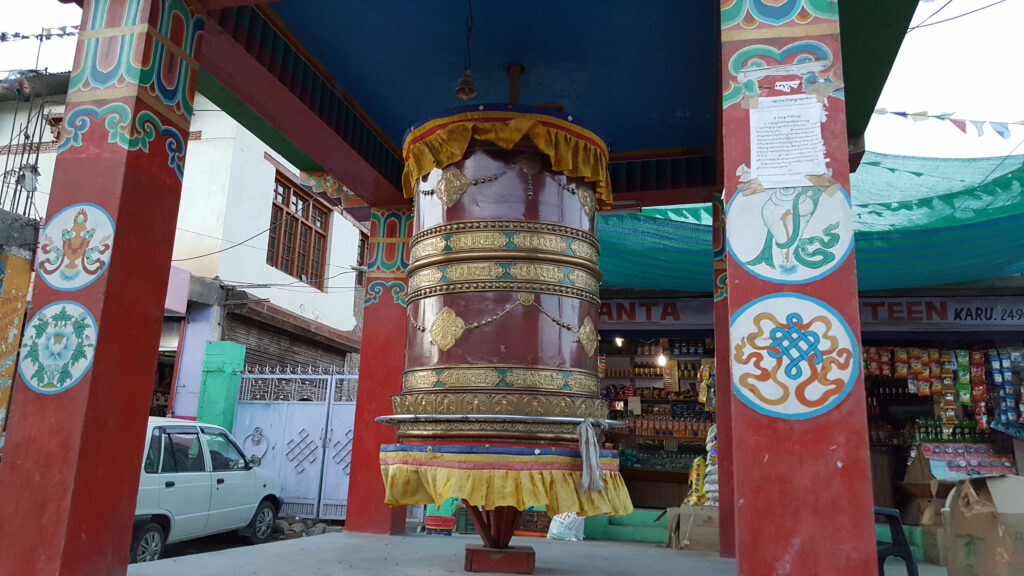
Things to buy: Tibetan handicrafts, Buddhist prayer bells as souvenirs, Ladakhi and Pashmina shawls with colourfully embroidered motifs, apricot jam and Kashmiri saffron.
Day 5-6 – Sonamarg and Jammu
The journey back from Leh was quite an adventure! We travelled throughout the night in pitch darkness and freezing temperatures to be able to cross Zoji La early morning before the traffic reverses. We travelled more than 12 hours non-stop to reach Sonamarg, where we halted for the day. With lush green forests and scenic views, Sonamarg is a popular destination in the Kashmir valley for trekking and rafting along the Sind and Jhelum river. Many Bollywood movies have been filmed here, with many interesting gossips shared by the locals. We spend the day trekking up to the Thajiwas glacier, the main glacier that feeds numerous waterfalls and lakes in the region. The trek takes you through picturesque views of alpine meadows and tall fir and pine trees. There are many horses in this region, which are also used for trekking up to the glacier.
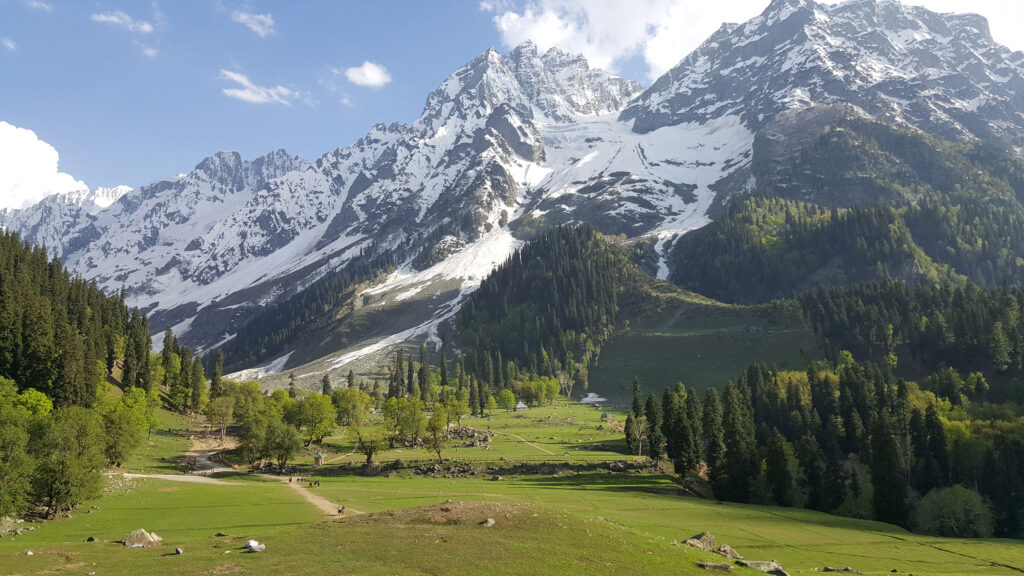
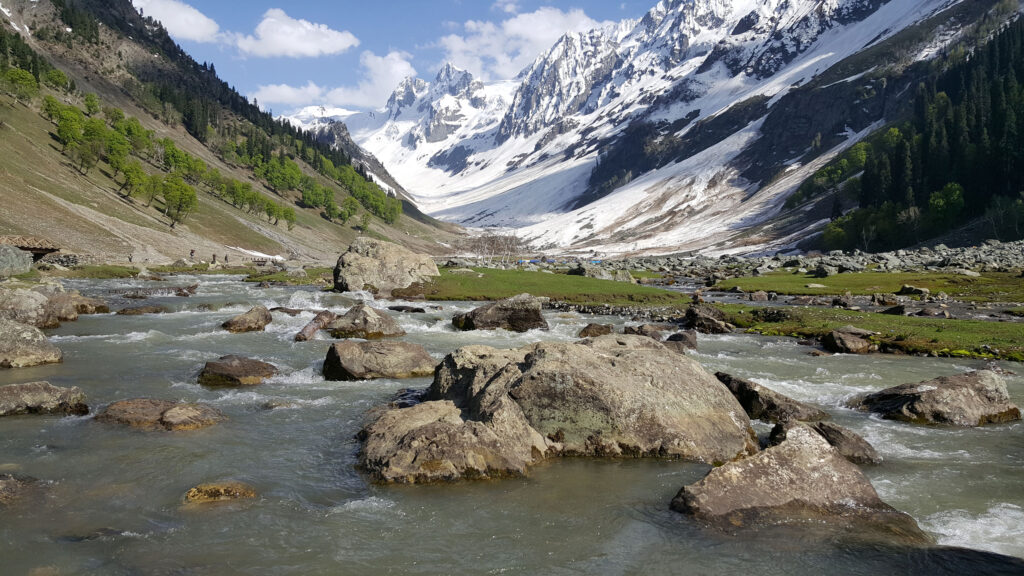
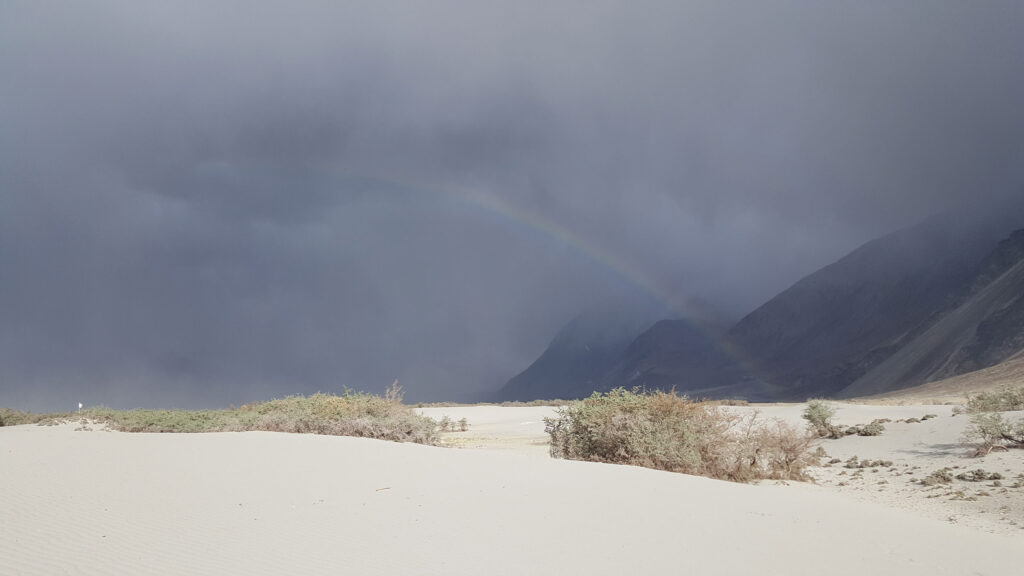
Late in the evening, we bid adieu to the Ladakh valley and started the final leg of our journey to Jammu. We reached Jammu after a 12-hour drive from Sonamarg and boarded the overnight train to Delhi. After spending 5 days at the top of the world, we returned to our routine life with a sense of achievement and admiration for the mighty Himalayas.
